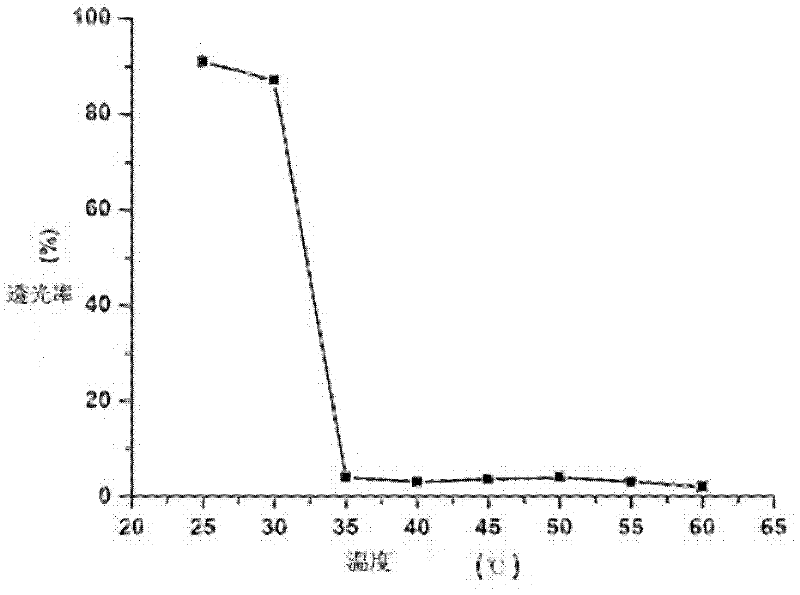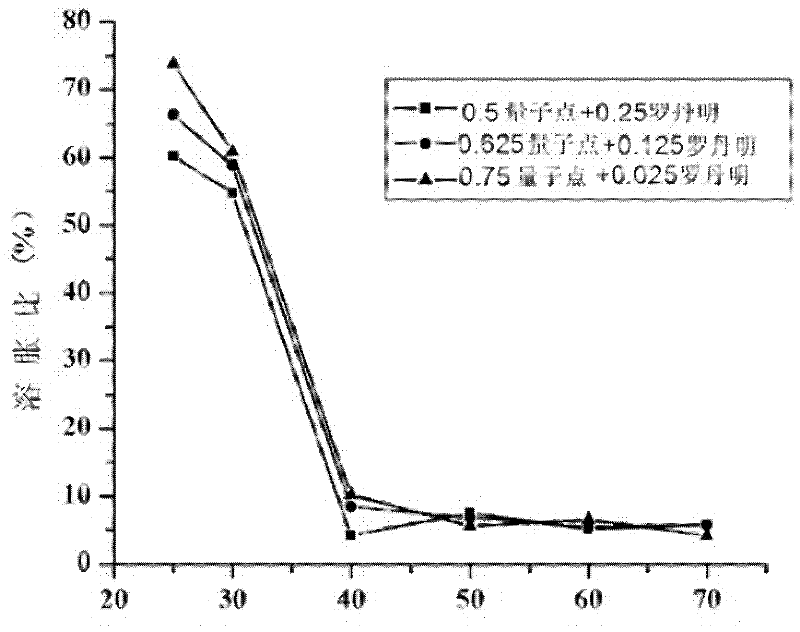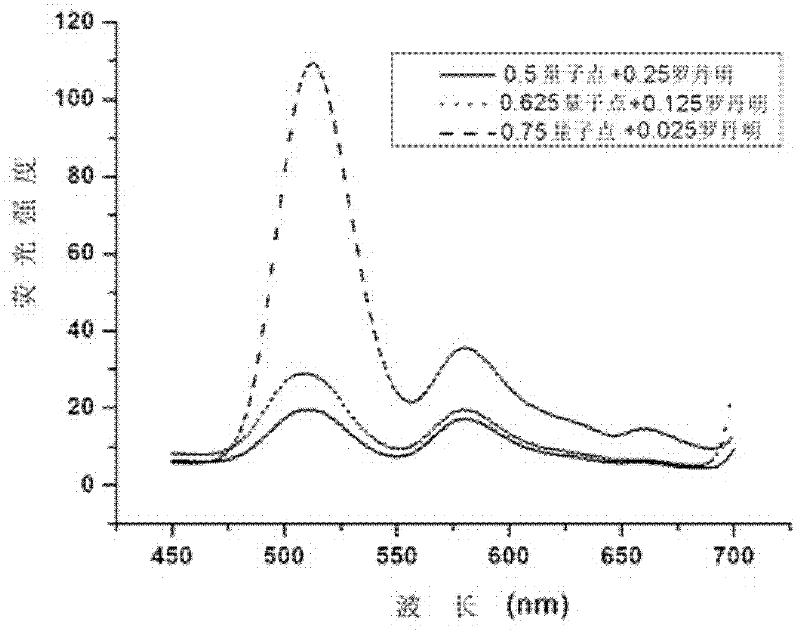An inorganic fluorescent quantum dot-rhodamine composite bulk temperature-sensitive hydrogel
A technology of temperature-sensitive hydrogel and quantum dots, which is applied in the direction of luminescent materials, chemical instruments and methods, etc., can solve the problems of restricting wide application and single performance of nanomaterials, and achieve rapid response capability, high pressure resistance, and simple synthesis process Effect
- Summary
- Abstract
- Description
- Claims
- Application Information
AI Technical Summary
Problems solved by technology
Method used
Image
Examples
Embodiment 1
[0033] Add 100mg monomer N-isopropylacrylamide into the mixed system of 0.5ml CdTe quantum dot aqueous solution and 0.25ml rhodamine B aqueous solution, and dissolve it ultrasonically at room temperature to form a uniform transparent solution; add crosslinking agents N, N 200 μl of '-methylenebisacrylamide, 180 μl of ammonium persulfate as initiator, and 20 μl of N,N,N,N-tetramethylethylenediamine (TEMED) as accelerator, each reagent added was mixed uniformly by magnetic stirring. React at a low temperature of 4°C for 1 hour to obtain a transparent bulk hydrogel. The product has high transparency, and the light transmittance is greater than 90%; it has two characteristic fluorescence peaks at 508nm and 579nm; its swelling ratio is 60.2%; and it can still return to its original state after being subjected to a pressure of 70Mpa.
Embodiment 2
[0035] Add 100mg monomer N-isopropylacrylamide into the mixed system of 0.625ml CdTe quantum dot aqueous solution and 0.125ml Rhodamine B aqueous solution, and dissolve it ultrasonically at room temperature to form a uniform transparent solution; add crosslinking agents N, N' in sequence - 200 μl of methylenebisacrylamide, 180 μl of initiator ammonium persulfate, 10 μl of accelerator N,N,N,N-tetramethylethylenediamine (TEMED), each reagent added was mixed uniformly by magnetic stirring. React at a low temperature of 0°C for 1.5 hours to obtain a transparent bulk hydrogel. The product has high transparency and a light transmittance greater than 90%; it has two characteristic fluorescence peaks at 508nm and 579nm; its swelling ratio is 66.2%; and it can still return to its original state after being subjected to a pressure of 70Mpa.
Embodiment 3
[0037] Add 100mg monomer N-isopropylacrylamide into the mixed system of 0.75ml CdTe quantum dot aqueous solution and 0.125ml rhodamine B aqueous solution, and ultrasonically dissolve at room temperature to form a uniform transparent solution; add crosslinking agents N, N 200 μl of '-methylenebisacrylamide, 180 μl of ammonium persulfate as initiator, and 15 μl of N,N,N,N-tetramethylethylenediamine (TEMED) as accelerator, each reagent added was mixed uniformly by magnetic stirring. React at a low temperature of 4°C for 1 hour to obtain a transparent bulk hydrogel. The product has high transparency and a light transmittance greater than 90%; it has two characteristic fluorescence peaks at 508nm and 579nm; its swelling ratio is 73.7%; and it can still return to its original state after being subjected to a pressure of 70Mpa.
PUM
 Login to View More
Login to View More Abstract
Description
Claims
Application Information
 Login to View More
Login to View More - R&D
- Intellectual Property
- Life Sciences
- Materials
- Tech Scout
- Unparalleled Data Quality
- Higher Quality Content
- 60% Fewer Hallucinations
Browse by: Latest US Patents, China's latest patents, Technical Efficacy Thesaurus, Application Domain, Technology Topic, Popular Technical Reports.
© 2025 PatSnap. All rights reserved.Legal|Privacy policy|Modern Slavery Act Transparency Statement|Sitemap|About US| Contact US: help@patsnap.com



